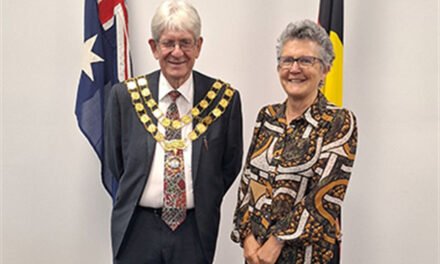The draft budget for 2024/25 shows that Hepburn Shire risks going broke. The Council wants to spend more money on services and infrastructure than it raises in rates, fees and charges. This year it will run a $2 million deficit with an ongoing, underlying shortfall around $4 million per year if nothing is done. For a Council that raises only about $30 million annually from rates and charges, this is a very significant shortfall.
Council has released the draft budget for the 2024/25 financial year for community consultation. Submissions can be made through the Participate Hepburn webpage. Council is required to formally adopt the budget by the end of June.
In the short term, Council intends to limit spending on roads, buildings, pools and other infrastructure to what is absolutely necessary. It will also reduce its operational spending.
The draft budget proposes a 2.75 per cent rate increase in line with the State Government cap, which is below cost of living increases of 3.6 per cent. Council intends to cut its operating costs by $1.5 million by reducing some its services and back-of-office spending. This means the Council workforce will reduce by around 20 staff largely through vacancy management.
Council intends to limit capital spending to roads, bridges, building maintenance and ongoing projects. The refurbishment of the Daylesford Town Hall is the only major new project it will fund itself. Other projects, including community hubs, swimming pools and pavilions, will not go ahead without external funding. Council will borrow $5.5 million for its own capital projects.
But the proposed budget is no solution to the longer term problems. To turn the underlying deficit around in the longer term, Council will either have to cut services, increase rates, find other revenue sources, outsource its services to other Councils or amalgamate with them.
Hepburn Shire has become unsustainable because it has a small, widely dispersed community with high expectations and a comparatively low level of rates. The population is only 16,500 people compared to Mt Alexander (20,000), Moorabool (38,500), and Macedon Ranges (52,100). The population is concentrated across five small towns, Daylesford and Hepburn Springs, Creswick, Clunes, Trentham and Glenlyon. Many community services and buildings are duplicated for each of these towns and there is an extensive road network connecting them.
That means costs per resident are higher for roads, rubbish, footpaths, bridges, council buildings, libraries, parks, senior citizens, child care and other community facilities and services. High inflation and cost shifting from other levels of government have added to Hepburn Shire’s financial problems. Add to this community expectations for services and infrastructure, demands from tourists and visitors and unexpected events like storms.
At the same time, while it might not feel this way to residents, Hepburn rates are low and capped. Average residential rates in Hepburn Shire are $1651 per year compared with $1753 in Mt Alexander and $1903 in Macedon Ranges. Other small shires like Alpine, Buloke and Murrindindi are all more than 10 per cent higher. Rates have been capped below inflation by the State Government. If rates had kept up with inflation, Hepburn Shire rates income would be $5.8 million higher.
All this means Hepburn Shire has very little cash. It isn’t quite broke yet, but it is fast heading in that direction. The proposed budget allows for less than $1 million in uncommitted cash to deal with unforeseen events like storms and fires. If recent years are any guide, Council will need much higher levels of financial reserves to safeguard against these risks.
At the heart of the problem, Council is spending 10 to 15 per cent more money than it raises in rates and charges.
Not surprisingly, Council would like to increase rates, but that means getting the rate cap lifted. Council intends to ask the Essential Services Commission for a rate increase above the cap. But that is not straightforward. The Commission would need to be convinced the community wants a rate increase, that Council is operating efficiently and that the spending being asked for is critical. There is no guarantee the Commission will agree to the Council’s request. And an increase above the rate cap would not apply until the 2024/25 financial year.
Council could also explore other mechanisms for raising revenue. These include user charges for parking and facilities, a bed tax for visitors, commercial partnerships and asset sales and leasing. These measures are not seriously addressed in the current budget and the Mayor and Chief Executive have been sceptical about their potential for raising additional revenue. Without more detailed analysis it is difficult to say whether there is potential for alternative sources of revenue.
More likely, Council will need to cut its spending to financially sustainable levels even if some revenue raising is possible. That would mean dramatically improving the efficiency of Council services by, for example, outsourcing major responsibilities like planning to other Councils or, even more drastically, merging with other Councils. Alternatively, Council could significantly reduce the costs of providing services by, for example, closing down expensive and ageing swimming pools and scaling back on community facilities, parks and gardens.
So far Council has not been willing to canvass these more drastic options with the community.
But Council and the community will get the chance to face these tough decisions starting in July when the Shire begins the preparation of a 10-year Long Term Financial Plan. That will require much more significant decisions if Hepburn Shire is to survive financially. It remains to be seen what a balanced budget would look like.
Related Stories:
Councillor Column – The Draft Budget Requires Difficult Decisions
Council Releases Tough 2024-25 Draft Budget for Community Feedback




